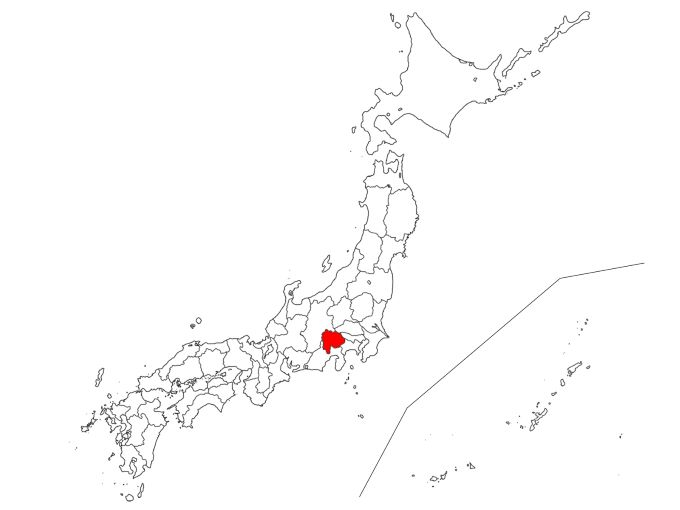Contents
1.Basic Information
“Fuji Five Lakes” is a collective term for the five lakes on the northern side of Mount Fuji, all of which are world heritage sites. These lakes were created when lava flows from the eruption of Mount Fuji divided a large lake and formed the present-day lakes.
In addition to being close to the Tokyo metropolitan area and easily accessible by public transportation, these lakes are popular tourist destinations. You can enjoy the beauty of cherry blossoms in spring, fresh greenery in summer, autumn leaves in fall, and snowy landscapes in winter, along with a variety of activities such as fishing, water sports, trekking, and hot springs. The area is also home to outdoor facilities like ski resorts, skating rinks, and camping sites, as well as museums and art galleries, making it a worthwhile destination year-round.
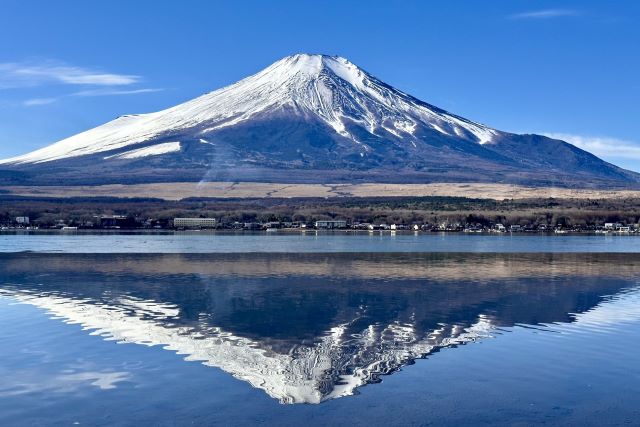
Lake Kawaguchi (Kawaguchiko)
Lake Kawaguchi, with an altitude of 830m, is the lowest of the Fuji Five Lakes, and with a circumference of 17.4km, it is also the longest. The lakeside is lined with hotels, inns, and souvenir shops, and you can enjoy beautiful scenery throughout the year, such as cherry blossoms in spring, autumn leaves in fall, and the reflection of Mount Fuji on the lake surface. Furthermore, lake sports like fishing and boating are also popular activities. While smelt fishing was famous in the past, sports fishing for black bass and other fish has become increasingly popular in recent years.
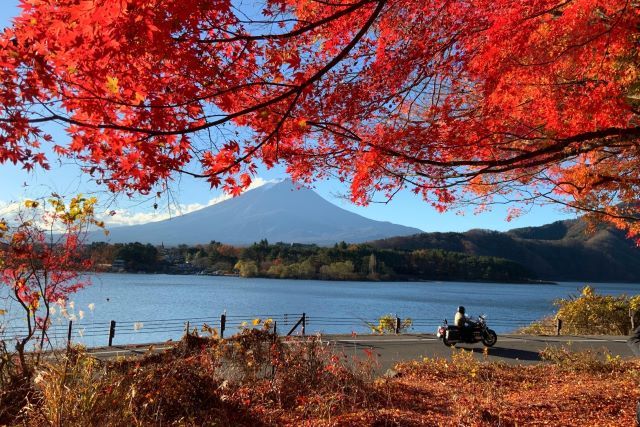
Motosu Lake (Motosuko)
Motosu Lake is the deepest among the Fuji Five Lakes and has extremely clear water. The view from this lake became the model for the inverted image of Mount Fuji printed on the back of the 1,000 yen bill.
The inverted image of Mount Fuji is a picturesque scene where the mountain’s reflection is mirrored on the lake surface, and it’s a representative view of Mount Fuji.
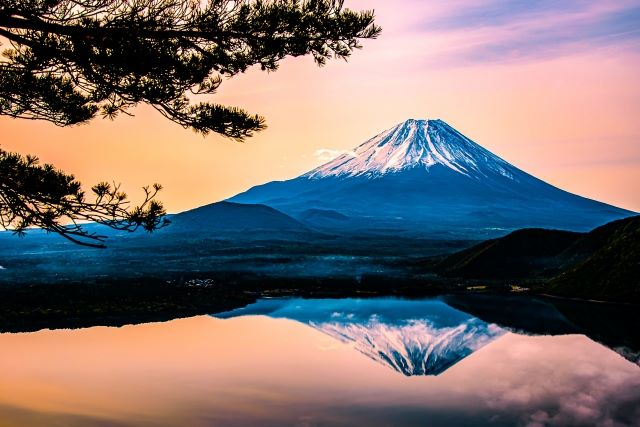
Lake Shojin (Syoujiko)
Lake Shojin is the smallest of the Fuji Five Lakes, with an area of 0.8 square kilometers and a circumference of 4.4 kilometers. The view of Mount Fuji from this lake is known as “Kobiki Fuji”. This is because the small mountain in the foreground looks like a child, and it seems as if Mount Fuji is embracing this child. This unique view of Mount Fuji is a popular spot for photographers.
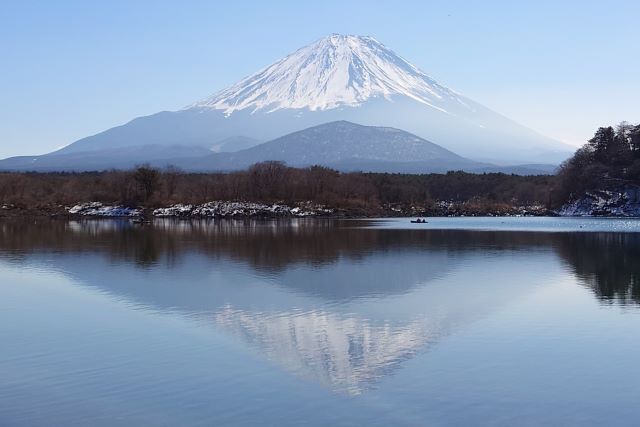
Lake Saiko (Saiko)
Lake Saiko is a mysterious lake surrounded by Aokigahara Forest and is the second deepest after Motosu Lake. The area around the lake is home to many caves formed by lava, with “Bat Cave” and “Ryugu Cave” being designated as national natural monuments. Nowadays, rainbow trout farming is conducted, and fishing is a popular activity. In addition, hydroelectric power generation is carried out using the height difference with the nearby Lake Kawaguchi.
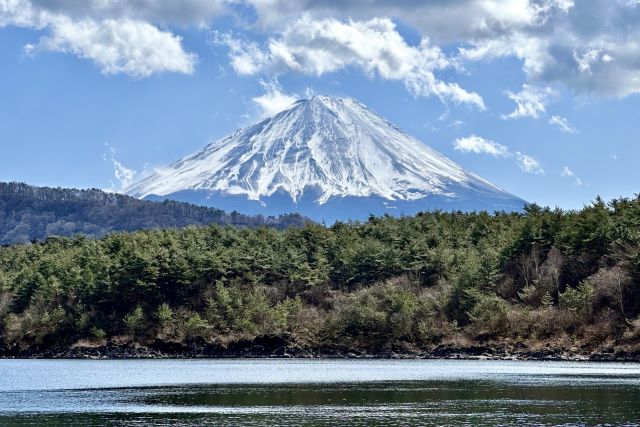
Lake Yamanaka (Yamanakako)
Lake Yamanaka is the largest of the Fuji Five Lakes in terms of area and is the closest to Mount Fuji. The cool summers make it a popular resort, and during the winter you can enjoy viewing “Diamond Fuji”. “Diamond Fuji” refers to the moment when the sun overlaps with the top of Mount Fuji, creating a scene where the sun shines like a diamond. The view at sunset is especially beautiful, and from Lake Yamanaka, it can be observed for a period of about four and a half months from autumn to winter. This phenomenon is a representative view of winter.
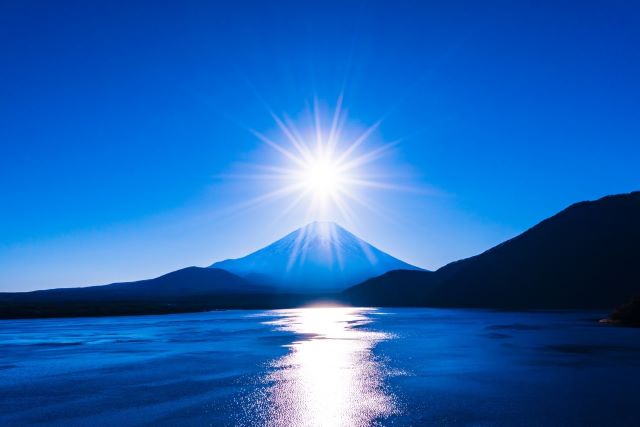
2.Reviews
Oshino Hakkai, located halfway between Lake Kawaguchi and Lake Yamanaka, with its eight spring-fed ponds (Deguchi Pond, Okama Pond, Soko Nuke Pond, Choshi Pond, Yuku Pond, Nigori Pond, Kagami Pond, and Shobu Pond) is highly recommended. These ponds are fed by subterranean flows from Mount Fuji and the surrounding mountain foothills. Each spring-fed pond, with the beautiful scenery of Mount Fuji in the background, allowed me to sense the history of being a place of ancient worship and purification rites.
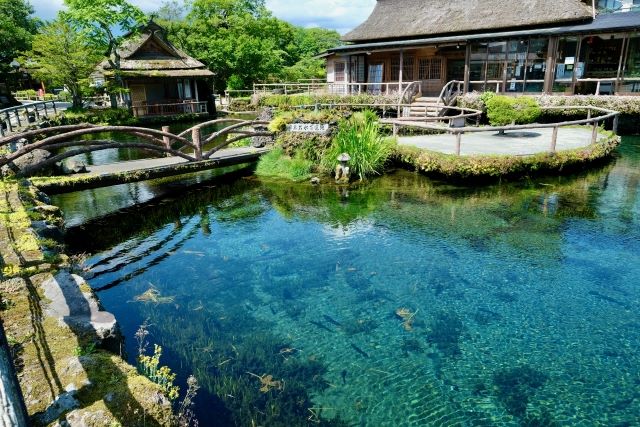
At the Saiko Nature Center located in Aokigahara Forest, guided forest walks are conducted by official guides. Aokigahara Forest, spreading northwest of Mount Fuji, is a vast primeval forest of approximately 30 square kilometers, reportedly formed over lava that flowed from an eruption of Mount Fuji around 1200 years ago. Nearby, there are camping grounds and parks, and promenades where you can walk through Aokigahara are well-maintained.
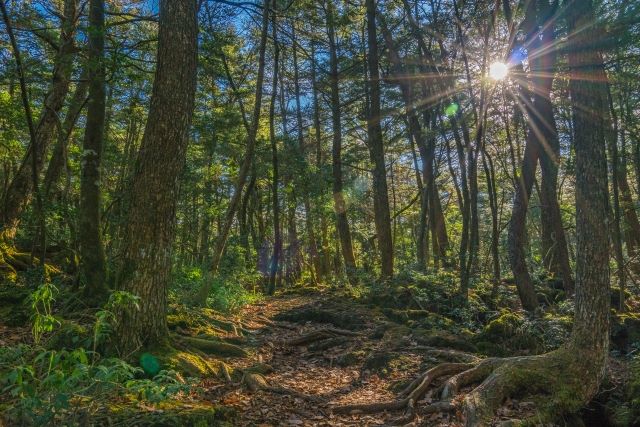
3.Local Food



4.Transportation Information
Railway to the Fuji Five Lakes area from Tokyo (Timetable & Fare)
Fujikyu Railway (Multilingual support)
https://www.fujikyu-railway.jp/
Highway bus to the Fuji Five Lakes area from Tokyo (Timetable & Fare)
Fujikyu Bus (Multilingual support)
https://bus.fujikyu.co.jp/highway/fujisan
Circulation bus in the Fuji Five Lakes area (Timetable & Fare)
Fujikyu Bus (Multilingual support)
https://bus.fujikyu.co.jp/rosen/shuyu
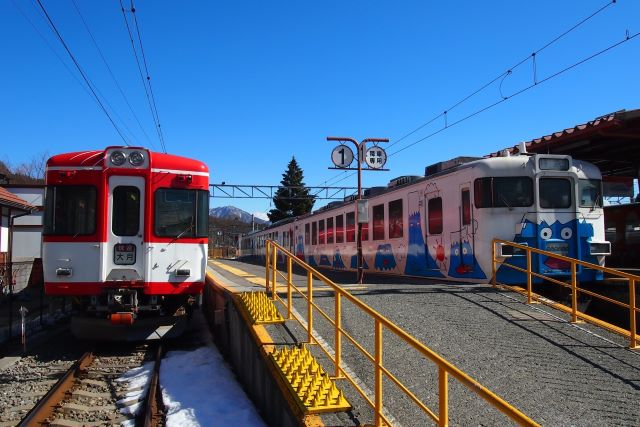
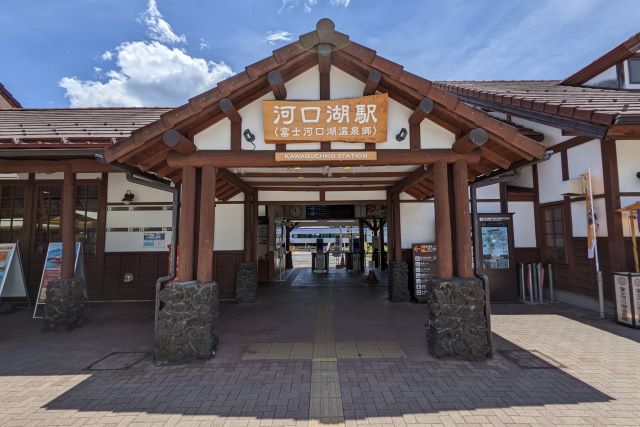
5.Map Information
The Fuji Five Lakes are located in Yamanashi Prefecture, situated in a highland area with altitudes ranging from 700m to 900m. It features a cold climate similar to Hokkaido. On the other hand, the cool summer season is comfortable, making it a popular resort area.
